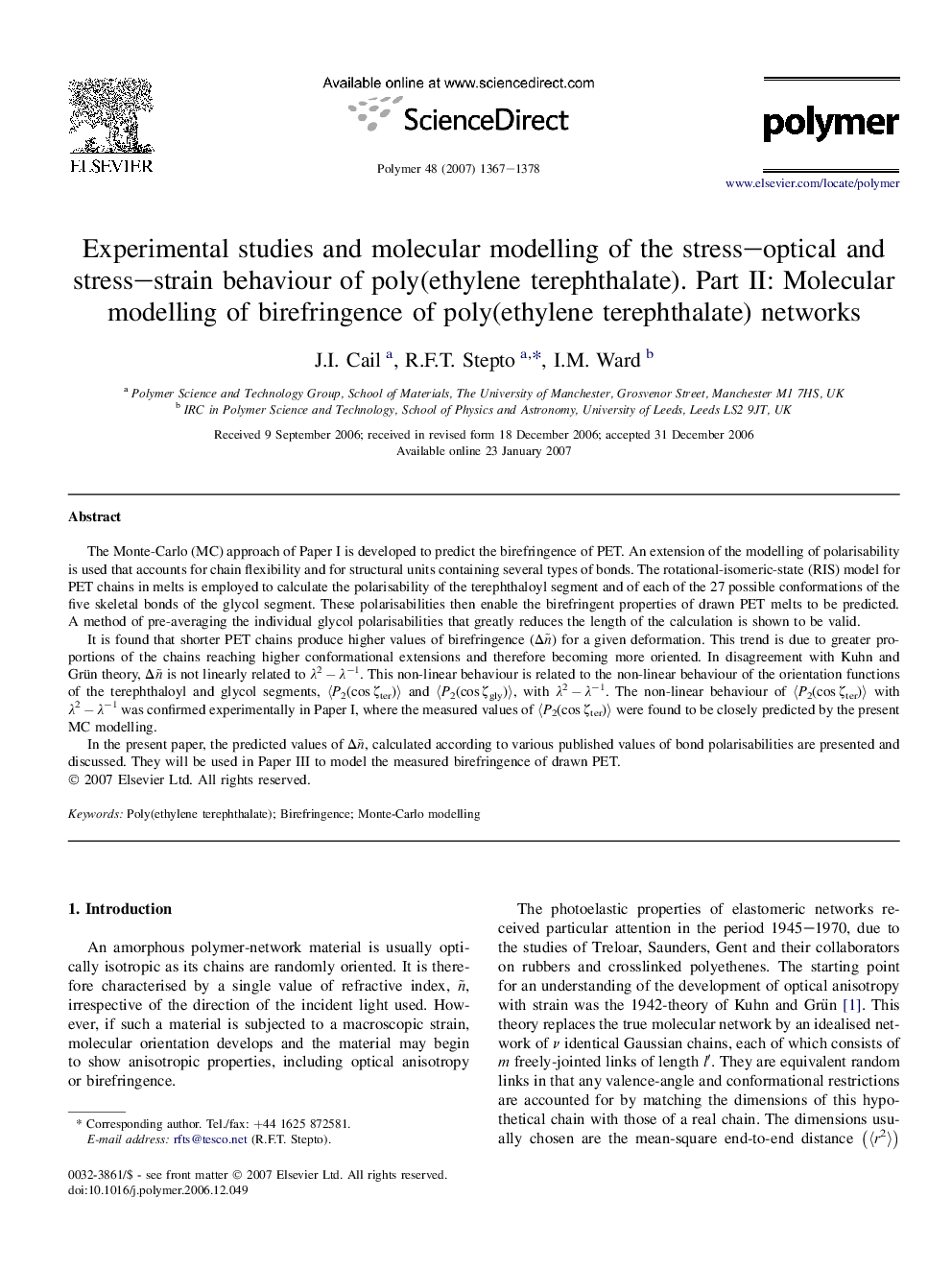| Article ID | Journal | Published Year | Pages | File Type |
|---|---|---|---|---|
| 5186135 | Polymer | 2007 | 12 Pages |
The Monte-Carlo (MC) approach of Paper I is developed to predict the birefringence of PET. An extension of the modelling of polarisability is used that accounts for chain flexibility and for structural units containing several types of bonds. The rotational-isomeric-state (RIS) model for PET chains in melts is employed to calculate the polarisability of the terephthaloyl segment and of each of the 27 possible conformations of the five skeletal bonds of the glycol segment. These polarisabilities then enable the birefringent properties of drawn PET melts to be predicted. A method of pre-averaging the individual glycol polarisabilities that greatly reduces the length of the calculation is shown to be valid.It is found that shorter PET chains produce higher values of birefringence (Îñ) for a given deformation. This trend is due to greater proportions of the chains reaching higher conformational extensions and therefore becoming more oriented. In disagreement with Kuhn and Grün theory, Îñ is not linearly related to λ2 â λâ1. This non-linear behaviour is related to the non-linear behaviour of the orientation functions of the terephthaloyl and glycol segments, ãP2(cos ζter)ã and ãP2(cos ζgly)ã, with λ2 â λâ1. The non-linear behaviour of ãP2(cos ζter)ã with λ2 â λâ1 was confirmed experimentally in Paper I, where the measured values of ãP2(cos ζter)ã were found to be closely predicted by the present MC modelling.In the present paper, the predicted values of Îñ, calculated according to various published values of bond polarisabilities are presented and discussed. They will be used in Paper III to model the measured birefringence of drawn PET.
